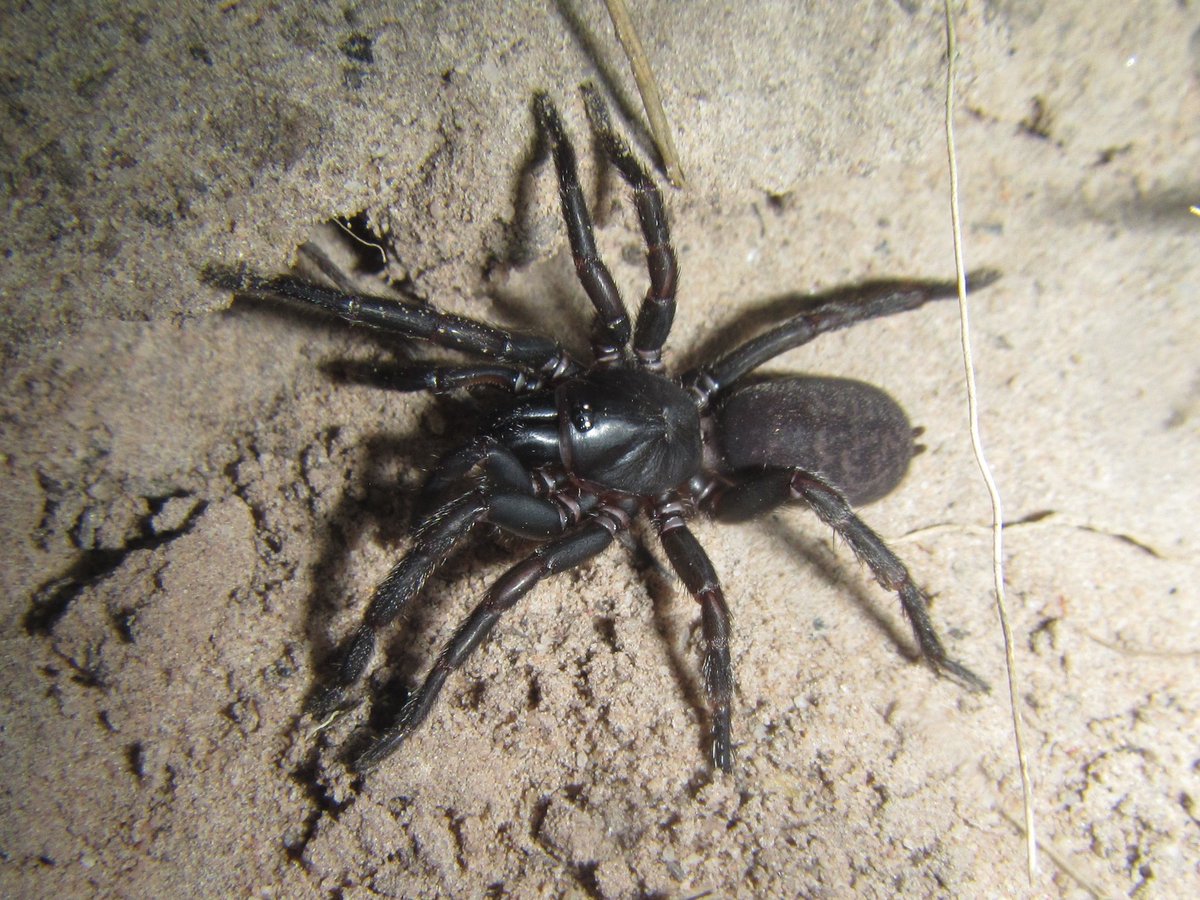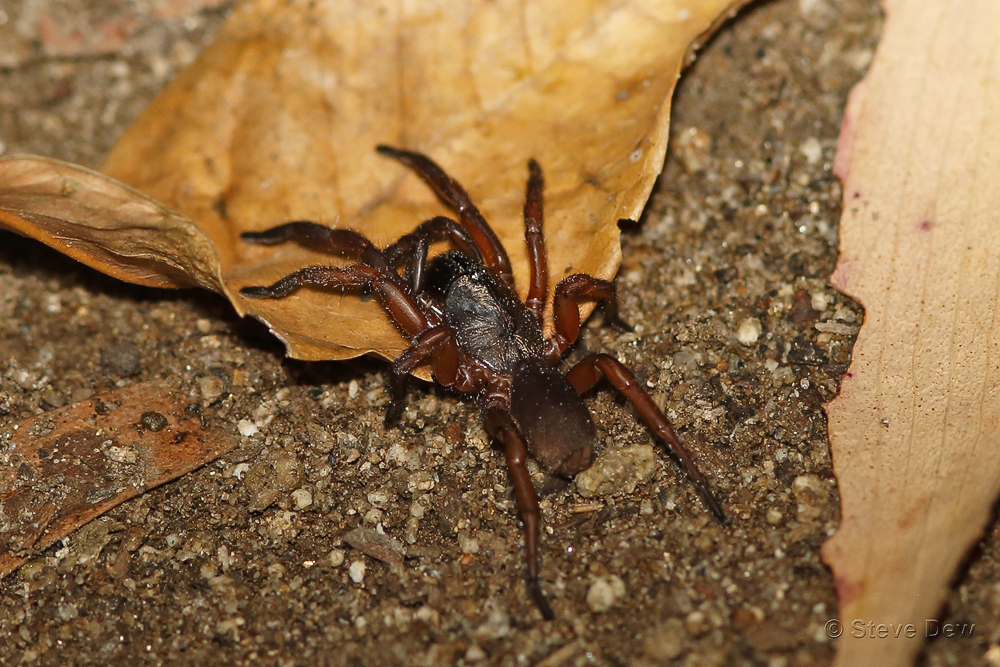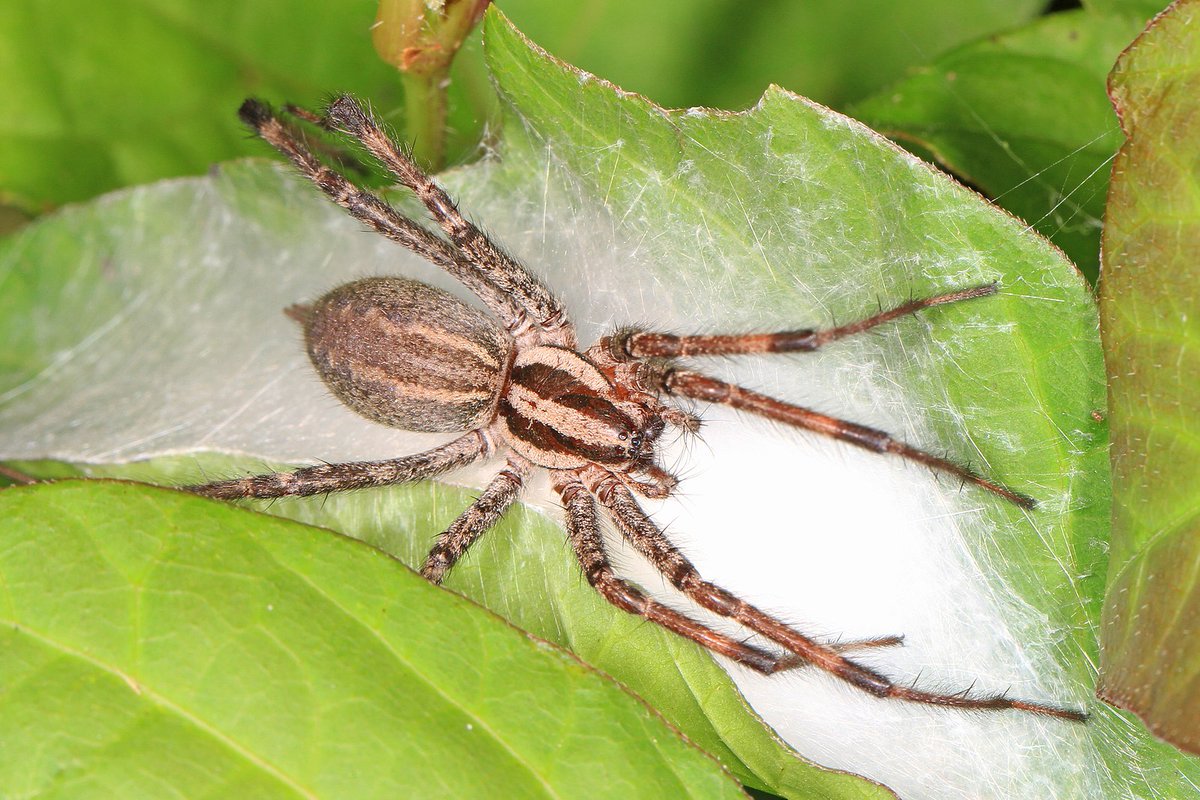
Today's #ScienteaficABC spider family is ANAMIDAE! A brand spanking new family, having only been elevated to full family status in this hell year 2020. Formerly, these spiders were a tribe, then a subfamily, of the family Nemesiidae. (Images: iNat Creative Commons) 

This family comprises 10 genera/104 species. These are mygalomorph spiders, an infraorder containing tarantulas, trapdoors, funnel webs, curtain webs & others characterised by their downward pointing chelicerae & fangs (& other things). (Chenistonia maculata by matthew_connors) 

Native to Australia, 3 genera of this family (Aname, Chenistonia & Namea) are commonly called 'wishbone spiders' owing to the shape of the burrows they create. The silk-lined burrow is Y-shaped with one branch of the Y being longer than the other.
The longer branch terminates with the burrow entrance with the other branch remaining completely concealed underground which is believed to create an air pocket in the event of flooding so that the spider has a safe place to wait it out. (Namea sp. by aussiecreature on iNat) 

Typically mygalomorph in appearance, these spiders have large chelicerae, a mostly flattened carapace with a cluster of 8, small eyes front & centre, & spinnerets that mostly remain tucked up, flush with the abdomen, like those of a tarantula. (Proshermacha sp. by npk on iNat) 

They have short hairs all over their bodies, some species being metallic/gold, but most are black, dark grey, or varying shades of brown. Whilst not enormous like many tarantula species, they are decent sized spiders. Here's a lovely gold Aname sp. (Pic: ethanbeaver on iNat) 

This image by iNat user npk shows a mature male Aname with a ruler for scale. Often, mygalomorph males are markedly smaller than females. 

This family undoubtedly still has many undescribed species yet to be studied & classified, due to the fact that they live in deep burrows in areas of open dry scrubland Western and Southern Australia. Here are some little Chenistonia trevallynia spiderlings (Pic: mhedin on iNat) 

Bites from Aname species are rare & their venom does not seem medically significant with most instances resulting in localised pain, redness & swelling and little more. Female A. inimica are known to be quick to bite, even earning an Aboriginal name that means 'unfriendly'.
As always, great care is taken to ensure that all images sourced are under Creative Commons license. If I have used an image here which you believe not to be CC, please let me know so that I can rectify!
iNat links:
inaturalist.org/observations/6…
inaturalist.org/observations/6…
inaturalist.org/observations/5…
inaturalist.org/observations/3…
inaturalist.org/observations/3…
inaturalist.org/observations/3…
inaturalist.org/observations/6…
inaturalist.org/observations/6…
inaturalist.org/observations/5…
inaturalist.org/observations/3…
inaturalist.org/observations/3…
inaturalist.org/observations/3…
@threadreaderapp unroll
• • •
Missing some Tweet in this thread? You can try to
force a refresh



















